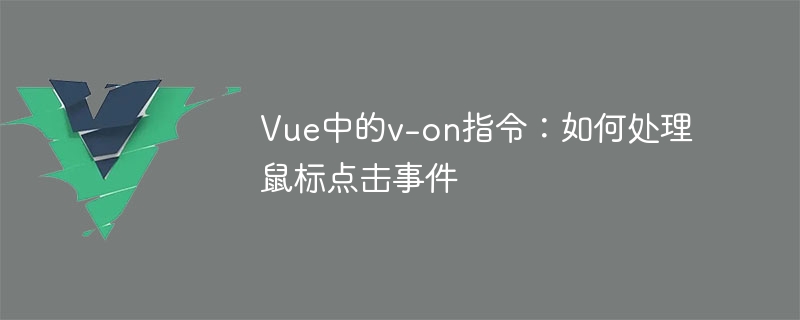

v-on directive in Vue: How to handle mouse click events, specific code examples are needed
Vue.js is a popular JavaScript framework that is widely used in Build interactive front-end applications. It provides many instructions to handle user interaction, one of which is the v-on instruction. The v-on directive is used to listen to DOM events and execute the specified method when the event occurs. In this article, we'll explore how to use the v-on directive to handle mouse click events and provide some concrete code examples.
First of all, we need to understand the basic usage of the v-on instruction. The v-on directive can be used in the following two ways:
Here is a simple example that shows how to use the v-on directive to handle mouse click events:
In the above example, we used @ on a button click directive to listen for click events and use the handleClick method as the value of the directive. When the user clicks the button, the handleClick method will be triggered and a prompt box will pop up.
In addition to simple processing methods, we can also pass additional parameters to the processing method as needed. For example, we can pass the event object event to the processing method to access event-related information inside the method. Here is an example:
In the above example, we use the @click directive to listen for click events and use $event as the parameter of the handleClick method. When the user clicks the button, the handleClick method is called and the details of the mouse click event are printed to the console.
In addition to listening to button click events, we can also use the v-on instruction to handle other mouse events, such as mouse move in, mouse move out, etc. Here is an example that shows how to use the v-on directive to handle mouse in and out events:
In the above example, we used the @mouseover and @mouseout directives on a button to listen for mouse in and removal events, and bind the relevant processing methods to these two instructions respectively. When the user moves the mouse into the button, the handleMouseOver method is called and "mouse in" is output on the console; when the user moves the mouse out of the button, the handleMouseOut method is called and "mouse out" is output on the console.
To summarize, the v-on directive in Vue provides a simple and convenient way to handle mouse click events and other mouse events. By using the v-on directive, we can easily listen to DOM events and execute the specified method when the event occurs. I hope the code examples and explanations in this article can help you better understand and use the v-on instruction.
The above is the detailed content of v-on directive in Vue: how to handle mouse click events. For more information, please follow other related articles on the PHP Chinese website!




